
About Scarlet Tanager:
- It is a strikingly beautiful songbird native to North America.
- Scientific Name: Piranga olivacea
- Habitat: Breeds in deciduous and mixed deciduous-evergreen forests; winters in forests and forest edges.
- They migrate to tropical forests in Central and South America during winter.
- Features:
- They are medium-sized songbirds with fairly stocky proportions. They average seven inches in length.
- They have thick, rounded bills suitable both for catching insects and eating fruit.
- The head is fairly large, and the tail is somewhat short and broad.
- In spring and summer, adult males are unmistakable, brilliant red with black wings and tails.
- Females and fall immatures are olive-yellow with darker olive wings and tails.
- After breeding, adult males molt to female-like plumage, but with black wings and tails.
- The Scarlet Tanager's song is often described as sounding like a “robin with a cold.” The bird's call, an emphatic “chip-burr,” is also distinctive and often can be a giveaway to the bird's location in a leafy treetop.
- IUCN Red List: Least Concern
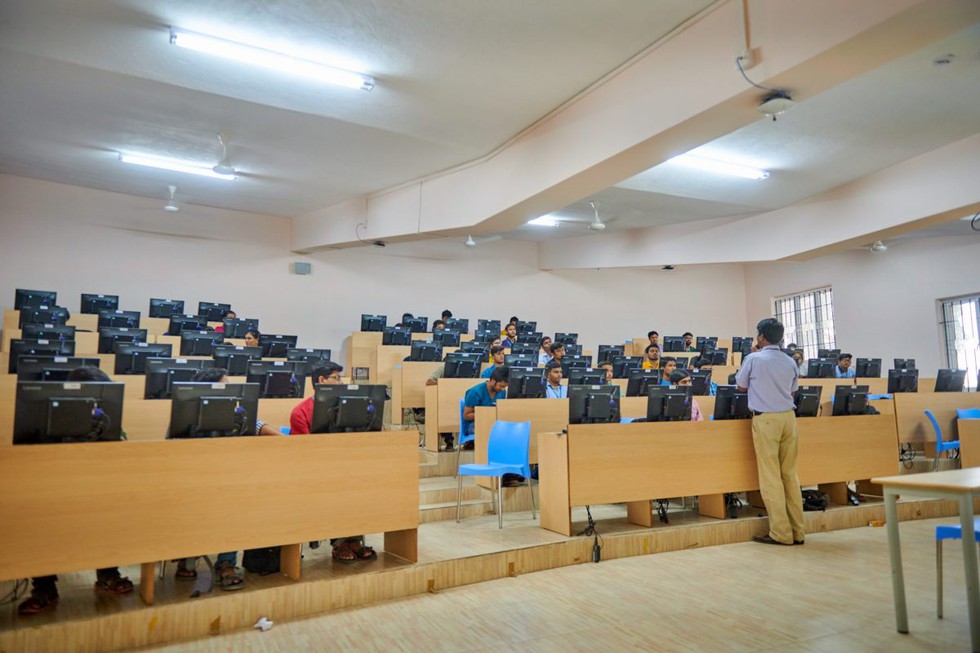
About Partnerships for Accelerated Innovation and Research (PAIR) Initiative:
- It is an initiative of the Anusandhan National Research Foundation (ANRF).
- Objectives:
- Stimulate scientific innovation in institutions with limited research in a mentorship mode by leveraging the knowledge and expertise of top-ranking institutions.
- Support internationally competitive research with substantial impact and outcome.
- Foster successful and productive collaborative networks between diverse institutions.
- Propel the advancement of institutions by (i) upscaling and building advanced research infrastructure and capabilities, (ii) enhancing the quality of research, and (iii) facilitating the infusion of best practices and research culture.
- While being aligned with the objectives set by the National Education Policy (NEP) 2020, the PAIR programme will cultivate research excellence in central and state public universities by fostering collaborations with top-tier institutions via a mentorship-driven hub and spoke model.
- The hubs will guide emerging institutions (spokes) in research activities, and provide access to harness their resources and expertise, thus bridging the gap between institutions and nurturing a robust research ecosystem in India.
- In the first phase, the Hub institutions would include the top 25 National Institutional Ranking Framework (NIRF) overall ranking as well as Institutions of National Importance within the top 50 NIRF overall ranking.
- The spoke institutions will include, Central and State Public Universities and select NITs and IIITs.
- Eligibility conditions would be expanded to include other universities and institutions in the subsequent phases.
- Each PAIR network would consist of one hub and up to seven spoke institutions.
- Only one proposal per hub institution is allowed, with a mandatory involvement of multi-departmental faculty teams from spoke institutions.
- Regional diversity among participants will also be ensured.
- The programme would help stimulate innovation in emerging institutions by leveraging mentorship from high-ranking institutions.
Key Facts about Anusandhan National Research Foundation (ANRF):
- The ANRF has been established with the ANRF 2023 Act.
- The ANRF aims to seed, grow, and promote research and development (R&D) and foster a culture of research and innovation throughout India’s universities, colleges, research institutions, and R&D laboratories.
- ANRF will act as an apex body to provide high-level strategic direction of scientific research in the country as per recommendations of the National Education Policy (NEP).
- With the establishment of ANRF, the Science and Engineering Research Board (SERB), established by an act of Parliament in 2008, has been subsumed into ANRF.
ANRF will forge collaborations among the industry, academia, and government departments and research institutions and create an interface mechanism for the participation and contribution of industries and state governments in addition to the scientific and line ministries

About Asia-Pacific Economic Cooperation (APEC):
- It is a regional economic forum established in 1989 with the purpose of promoting free trade and investment and enhancing cooperation in social and development areas to advance prosperity, sustainable, and inclusive economic growth in the region.
- What Does APEC Do?
- APEC ensures that goods, services, investments, and people move easily across borders.
- Members facilitate this trade through faster customs procedures at borders, more favorable business climates behind the border, and aligning regulations and standards across the region.
- APEC has contributed to the reduction of barriers to trade in the region over time, leading to the expansion of economic growth and international trade.
- Member Countries:
- Currently, APEC has 21 members. The 21 members are not necessarily 21 countries.
- Each member is considered an “economy” since APEC is primarily concerned with trade and economic dealings.
- The grouping's current members are Australia, Brunei, Hong Kong, New Zealand, Papua New Guinea, the Philippines, Indonesia, China, Japan, South Korea, Russia, Canada, the United States, Mexico, Peru, Chile, Malaysia, Vietnam, Singapore, Thailand, and Taiwan.
- The 21 APEC member economies account for nearly 40 percent of the global population, almost half of the global trade, and approximately 60 percent of global GDP.
- APEC holds annually the APEC Economic Leaders Meeting, attended by the heads of government of all APEC members.
- Decisions made within APEC are reached by consensus, and commitments are undertaken on a voluntary basis.
- APEC’s activities are coordinated by the APEC Secretariat located in Singapore.
- In 2021, the APEC Economic Leaders’ Meeting endorsed the Putrajaya Vision 2040, providing a future direction for APEC which focuses on 3 priorities:
- open trade and investment;
- innovation and digitalization;
- sustainable and inclusive economic growth;

About Methamphetamine:
- Methamphetamine, commonly referred to as meth, is a powerful, highly addictive stimulant that affects the central nervous system.
- It takes the form of a white, odorless, bitter-tasting crystalline powder that easily dissolves in water or alcohol.
- It was developed early in the 20th century from its parent drug, amphetamine, and was used originally in nasal decongestants and bronchial inhalers.
- Like amphetamine, methamphetamine causes increased activity and talkativeness, decreased appetite, and a pleasurable sense of well-being or euphoria.
- However, methamphetamine differs from amphetamine in that, at comparable doses, much greater amounts of the drug get into the brain, making it a more potent stimulant.
- The use of methamphetamine in higher doses can induce psychosis, bleeding in the brain, skeletal muscle breakdown, and seizures.
- Moreover, it can cause violent behavior, mood swings, and psychosis such as paranoia, delirium, auditory and visual hallucination, and delusions when used chronically.
- It also has longer-lasting and more harmful effects on the central nervous system.
- Methamphetamine is potent and easy to produce. These characteristics make it a drug with a high potential for widespread misuse.
- Chronic long-term methamphetamine use can be highly addictive, and if it is discontinued abruptly, it might lead to withdrawal symptoms that can be persistent for months after use.
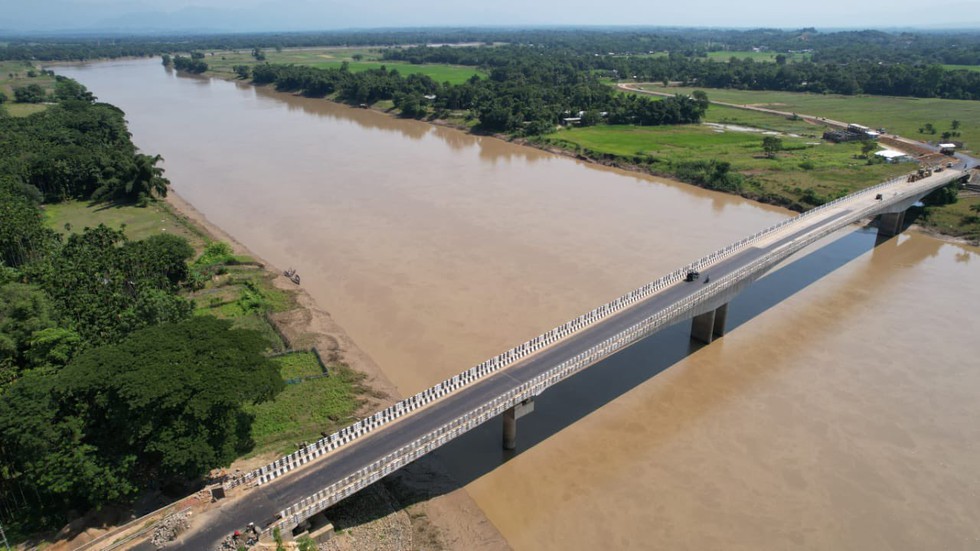
About Barak River:
- It is the second largest river in Northeast India after the Brahmaputra.
- The river runs through Manipur, Nagaland, Mizoram and Assam in India and Bangladesh.
- Course:
- Origin: It rises from the Manipur hills, south of Mao in the Senapati district of Manipur at an elevation of 2,331 m.
- It flows then along the Nagaland-Manipur border through hilly terrains and enters Assam.
- It further enters Bangladesh where it is known by the name of the Surma and the Kushiyara and later called the Meghna before receiving the combined flow of the Ganga and the Brahmaputra.
- It finally outfalls into the Bay of Bengal.
- Length: Barak has a length of about 900 km of which, 564 km falls in India.
- The major part of the basin is covered by forest, accounting for 72.58% of the total area, and only 1.92% of the basin is covered by water bodies.
- It is bounded on the north by the Barail range separating it from the Brahmaputra sub-basin, on the east by the Naga and Lushai hills, and on the south and west by Bangladesh.
- Tributaries: The principal tributaries of Barak are the Jiri, the Dhaleswari, the Singla, the Longai, the Sonai, and the Katakhal.
- The composite Ganga–Brahmaputra–Meghna basin covers nearly one-third of the land area of the Indian Union.

About Exercise Poorvi Prahar:
- It aims to hone the combat effectiveness of the Army, Navy, and Air Force in executing Integrated Joint Operations in the challenging mountainous terrain of the region, enhancing inter-service coordination and operational readiness.
- It brings together a wide spectrum of cutting-edge military platforms and systems, showcasing India’s advancements in modern warfare technology.
- A key feature of this exercise is the integration of innovative technologies that are reshaping the future of military operations.
- Troops are operating and refining skills with Swarm Drones, First Person View (FPV) Drones, Loitering Munitions, and cutting-edge technologies that dramatically enhance situational awareness, precision strikes and operational flexibility.
- The incorporation of these tools into the exercise reflects the military’s commitment to leveraging next-generation technologies to bolster defence capabilities.
- It serves as a platform for further absorption and integration of advanced technological tools and joint command structures that improve collaboration across services.
- One of the core components of the exercise is the development of a Common Operating Picture (COP) through joint control structures that optimise coordination between ground, air, and naval forces.
- Real-time information is seamlessly shared through systems operating on satellite communications, powered by AI-driven analytics, enabling more precise decision-making and faster response times.
- By conducting Ex Poorvi Prahar, the Indian Armed Forces are enhancing their ability to execute seamless, multi-domain operations across land, air, and sea, reinforcing India’s strategic deterrence capabilities.
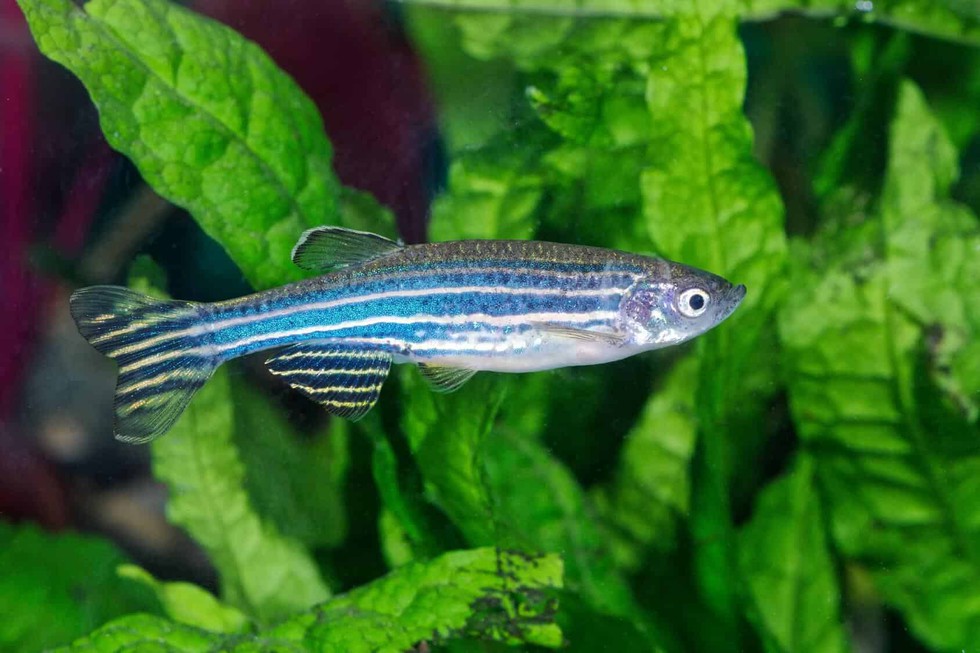
About Zebrafish:
- It is a small (2-3 cm long) freshwater fish found in tropical and subtropical regions.
- The vertebrate takes its name from the horizontal blue stripes running the length of its body.
- Habitat: It is native to South Asia's Indo-Gangetic plains, where they are mostly found in the paddy fields and even in stagnant water and streams.
- Features
- It attracts developmental biologists due to its adequate regeneration capacity of almost all its organs, including the brain, heart, eye, and spinal cord.
- It possesses several advantages over rodent models in the study of vertebrate development and disease.
- These include hundreds of embryos in a single clutch and optical clarity of the developing embryo (have transparent larvae and embryos), which allows live imaging at the organism level.
- They are easily bred in large numbers with a relatively low maintenance cost.
- Approximately 70 percent of zebrafish genes are also present in a similar form in humans.
- Over 80 percent of genes that are known to trigger disease in humans are also present in this fish.
- Conservation status
-
- IUCN: Least concerned.
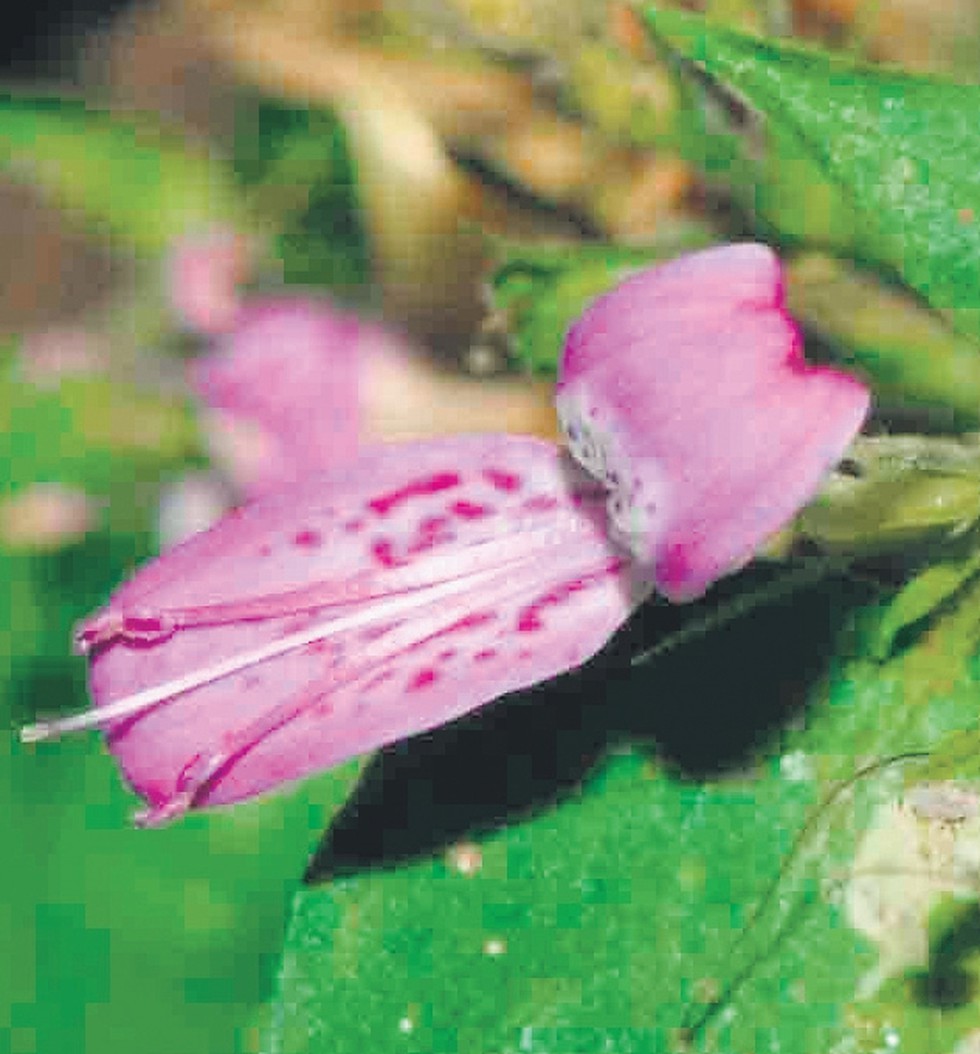
About Dicliptera srisailamica:
- It is a new plant species belonging to the Acanthaceae family.
- It is named after the temple town of Srisailam.
- It was found in rare patches along stream banks and rocky edges near waterfalls.
- Features
- The plant is an erect herb, reaching up to 90 cm, with four-angled stems covered in fine, deflexed hairs when young.
- Its leaves are ovate, with prominent veins and smooth margins.
- The plant blooms with small, pink, bi-lipped flowers arranged in clusters, commonly seen from October to January.
- It has short, downturned hairs on the stem and distinctive bracts around the flowers.
- The capsules containing the seeds are also covered in simple hairs.
- It adds to the diversity of this plant family, which is represented globally by 223 known species. In India, the Dicliptera genus includes 27 species, eight of which are endemic to the country.
- Andhra Pradesh alone is home to seven recorded species of Dicliptera, contributing significantly to the flora of the Eastern Ghats.
- This discovery adds to the diversity of India's flora, as Dicliptera is known for its tropical and subtropical presence worldwide.
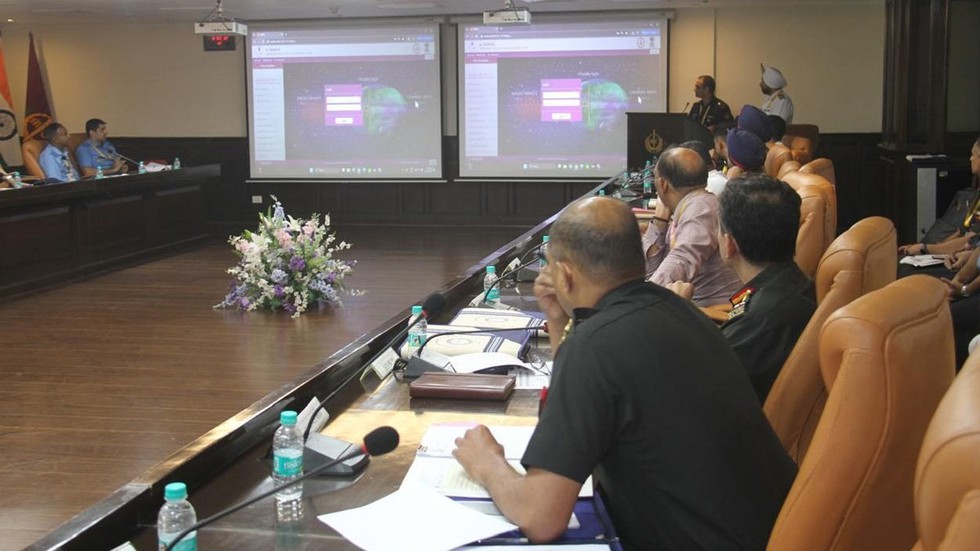
About AI-enabled e-Tarang System:
- It is a unique software, developed in collaboration with Bhaskaracharya National Institute for Space Applications and Geo-informatics (BISAG-N).
- It will improve planning for the interference-free operation of defence equipment during both wartime and peacetime.
- It will enable automated, efficient planning and management of Defence Spectrum, as well as support the development of newer technologies in higher frequency bands.
- It is set to support rapid decision-making, thereby allowing seamless integration of newer technologies critical for modern defence applications.
Key facts about the BISAG-N
- It is an Autonomous Scientific Society of the Ministry of Electronics & Information Technology (MeitY), Government of India.
- It undertakes technology development and management, research and development, facilitation of National and international cooperation, capacity building, and support of technology transfer and entrepreneurship development in geospatial technology.
- The Organisation has three main domain areas: Satellite Communication, Geo-informatics and Geo-spatial technology.
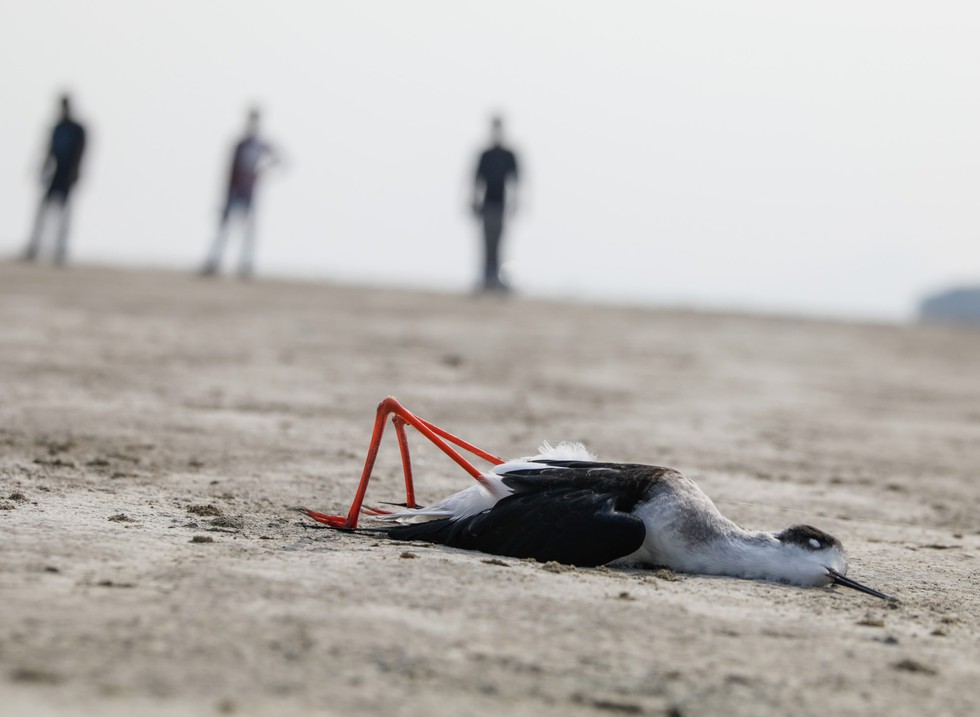
About Avian Botulism:
- It is caused by the ingestion of a toxin produced by the bacterium Clostridium botulinum, which leads to paralysis and can be fatal for birds.
- These bacterial spores are widespread in wetland sediments and are found in most wetland habitats, including invertebrates such as insects, molluscs, and crustaceans, as well as in many vertebrates, including healthy birds.
- There are seven types of botulism toxins (A-G). Wild birds are affected by type C and type E.
- Environmental conditions thought to contribute to toxin production include high water temperatures and low oxygen levels in the water.
Key facts about Sambar Lake
- It is the largest saltwater lake in India.
- It is located in the districts of Nagaur and Jaipur in Rajasthan.
- It covers an area in excess of 200 sq.km., surrounded on all sides by the Aravalli hills.
- The water from two major ephemeral streams, namely Mendha and Runpangarh, along with numerous rivulets and surface runoff feed the lake.
- It was designated as a Ramsar site in the year 1990.
- Several migrating birds visit the waterbody during the winter.


























































































































































.png)
.png)
.png)
.png)
.png)


.png)
.png)
.png)





.png)
.png)






.png)
.png)
.png)
.png)
.png)
.png)
.png)
.png)
.png)

.png)







.png)
.png)


.png)
.png)
.png)


.png)

.png)
.png)





.jpg)

.png)
.png)


.png)

.png)
.png)
.png)

.jpg)

.jpg)


.png)

.png)
.png)
.png)
.png)
.png)
.png)
.png)
.png)
.png)
.png)




.png)

.png)





.png)
.png)
.png)
.png)
.png)
.png)
.png)
.png)
.png)
.png)
.jpg)
.jpg)

.png)
.png)
.png)
.png)
.png)
.png)
.png)
.png)
.png)
.png)
.png)
.png)
.png)
.png)
.png)
.png)
.png)
.png)
.png)
.png)
.png)
.png)



.png)
.png)

.jpg)
.jpg)


.jpg)
.jpg)
.jpg)
.jpg)
.jpg)

.jpg)








.jpg)
.jpg)
.jpg)
.jpg)
.jpg)

















.jpg)
.jpg)







.jpg)


















.jpg)
.jpg)






























































































.jpg)
.jpg)


























.jpg)

.jpg)










.jpg)








.jpg)




.jpg)










.jpg)


















.jpg)












































.jpg)














.jpg)
.jpg)
.jpg)





.jpg)

.jpg)
.jpg)





































































.jpg)


































.jpg)
.jpg)
















































.jpg)












.jpg)


.jpg)




.jpg)
.jpg)
.jpg)

.jpg)
.jpg)
.jpg)
.jpg)

.jpg)
.jpg)
.jpg)

.jpg)
.jpg)
.jpg)
.jpg)
.jpg)
.jpg)
.jpg)
.jpg)

.jpg)


.jpg)
.jpg)
.jpg)
.jpg)
.jpg)
.jpg)
.jpg)
.jpg)
.jpg)
.jpg)











.jpg)
.jpg)





.jpg)
.jpg)
.jpg)
























.jpg)
























.jpg)









.jpg)
.jpg)







.jpg)
.jpg)









































.jpg)
.jpg)
.jpg)
.jpg)
.jpg)

.jpg)
.jpg)
.jpg)
.jpg)
.jpg)


.jpg)
.jpg)
.jpg)
.jpg)
.jpg)

.jpg)
.jpg)
.jpg)
.jpg)
.jpg)
.jpg)
.jpg)
.jpg)
.jpg)
.jpg)
.png)

.png)
.png)

.png)
.png)
.png)
.png)


.jpg)
.jpg)

.jpg)
.jpg)
.jpg)

.png)
.png)
.png)
.png)
.png)
.png)
.png)

.png)
.png)
.png)
.png)
.png)
.png)
.png)
.png)
.png)
.png)





































































-min.png)



.png)




.png)








































